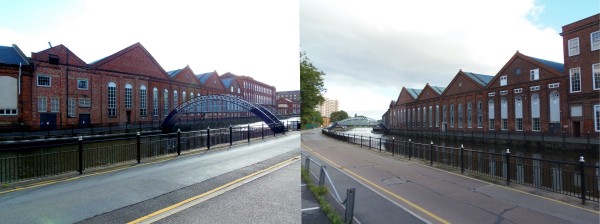Nathaniel Clayton and Joseph Shuttleworth, a shipwright, formed a partnership in 1842.
Nathaniel Clayton was born in Lincoln in August 1811 to Nathaniel and Mary (nee Harrison) Clayton. His father was the proprietor of a horse-drawn packet boat that plied the River Witham between Boston and Lincoln; he died in 1827 at the age of 56.
Nathaniel, the younger, had begun an engineering apprenticeship with Butterley in Derbyshire, with the death of his father he returned to Lincoln to operate the packet boat for his mother.
Nathaniel married Hannah Shirtcliff at St Paul in the Bail in 1837.
He set up an iron foundry on land next to Shuttleworth and Godwin, boatbuilders.
Joseph Shuttleworth was born on 12th July 1819 at Dog Dyke, son of John Allenby and Rebecca (nee Newton) Shuttleworth. John Shuttleworth was a boat builder.
Joseph managed a boat-building company at Stamp End that was acquired by his father.
He married Sarah Grace Clayton, the sister of Nathaniel Clayton, in 1842.
Nathaniel Clayton and Joseph Shuttleworth formed a partnership to build steam engines in 1842
Using 1.5 acres of land on Waterside South, which was liable to flood, they set about raising the level of the land by carting in soil. They began with 12 men, 2 forges and a lathe. During the early years of Company, Charles Seely and Thomas Keyworth were partners, helping fund the business. Keyworth and Seely had a steam-powered flour mill near the Brayford. Cornelius Emmison was a partner until 1847.
Clayton, Shuttleworth & Company built their first portable steam engine in 1845, and it was demonstrated at the Cornhill. |
| 11 August 1848 |
In 1849, their first thrashing machine was built. They built steam engines for other manufacturers as well as for themselves. The number of people employed by the company expanded rapidly from 100 men in 1848 to 520 men and 80 boys in 1854, it was by this time the biggest manufacturer of portable steam engines in the world. Their thrashing machines were being sold throughout Europe, in 1857 they claimed that they had sold 2,400 thrashing machines.
 |
| The Works in 1854 |
 |
| The Works in 1861 |
By 1862 the firm employed 940 men, 1871 1200 employees
Joseph Shuttleworth was taken ill at his home at Hartsholme Hall in January 1883, he died after a few days on 25th January.
Nathaniel Clayton died suddenly on 21st December 1890 during a communion service at St Peter at Arches church.
The firm became a limited company in 1901 and Alfred Shuttleworth, the son of Joseph Shuttleworth became chairman.
 |
| 1908 |
A subsidiary, Clayton Wagons Ltd, was formed in 1917 to produce railway wagons and steam lorries in a new factory, the Abbey Works. Clayton Wagons produced the Dewandre servo from 1926, and demand was so great that a new company was formed, Clayton Dewandre.
During World War I C & S built aircraft, including Sopwith Camels of which over 500 were made.
 |
| 1927 Steam Engine & Thrasher |
After World War I engineering companies found themselves with empty order books, Ruston, Proctor & Co Ltd and Richard Hornsby Ltd of Grantham took the wise decision to merge their businesses, Clayton & Shuttleworth struggled on for the next ten years selling off parts of the business to keep going.
Babcox & Wilcox bought the engineering part of Clayton & Shuttleworth Ltd in 1924.
Clayton Wagons entered liquidation in October 1929 and the Abbey Works was eventually acquired by Smith’s Stamping Works of Coventry and renamed it Smith-Clayton Forge, which became a subsidiary of GKN in 1966
Marshall, Sons & Co of Gainsborough bought the goodwill, debts and spare parts.
 |
| 1937 |
Clayton Dewandre was acquired by American Standard Co in 1977.




